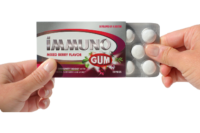That great new product is ready to go. Concept test results are positive. In-home usage tests of the product are positive. The package design looks great.
Oops!
Wait a minute. What are we going to call this new product? What is its name to be? This would seem like a very simple problem to solve. Do a little ideation to come up with 50 or 100 names, and then screen those names for the best candidates; that is, show those 50 or 100 names to consumers and ask them to pick the winners.
Slam dunk. Problem solved. A new name is found.
But, hold on. It’s not that simple and it’s not that fast. There are barriers and obstacles we must surmount.
Common challenges to creating new brand names:
1. Legal Barriers
There’s the “little’’ obstacle of getting the names past the lawyers.
The legal barriers can seem formidable at times. All of the winning names seem to be spoken for, according to the lawyers. This is where good lawyers become extremely valuable. Perhaps the other claims to the winning names are for product categories not directly competitive to your new product, or perhaps the winning names can be purchased at reasonable prices. Maybe your company is willing to roll the dice and use the name, even though its legal status is a bit risky.
Generally, your lawyers will not be very interested in doing legal research on 50 to 100 names, so the legal research is often reserved for the five to 10 names that score highest in the name screening research mentioned above.
Regardless of when the legal research is conducted, it is an important step in arriving at a new name that you can actually use.
2. Human Bias Barriers
Another barrier to choosing good names is human biases. The average person tends to react most favorably to names that sound or seem familiar, or remind her of something familiar (we call this the “status quo bias’’ or “familiarity bias’’). Names that are more descriptive, more explanatory, or more commonplace tend to be favored by consumers. The average person tends to be very literal in reacting to names – without considering metaphor, allegory, allusion, or symbolism. Collectively, these status quo tendencies are likely to influence consumers to choose a prosaic name for your exciting, new product. We’ll come back to this subject later.
3. Lack-of-Context Barriers
The other major barrier to consumers choosing a good name is lack of context. The participants in the name screening test don’t know anything about your new product, so you must explain what the new product is before asking anyone to select names. Normally, this is done with a rough ad or a “concept board,’’ or with an explanatory video. This concept will have a picture of the product, explain its characteristics and properties, discuss how the product is used, and perhaps list some of its strengths and advantages. Rarely would a price be included in this concept. The concept would be presented to respondents during the survey, just before the names are shown.
So, we are aware of the barriers and are now ready to push ahead with the name testing.
How to pick the final name:
1. The Name Reduction Sort
With 50 to 100 names, the first task is quickly reducing the number of name possibilities for the product or service described in the ad or concept. It is best to do this with a “card’’ sort. The list of possible names is shown in randomized order. As each name is shown, participants are asked to sort the names into “buckets,’’ such as the “Like’’ bucket or the “Dislike’’ bucket, or perhaps “Like Very Much,’’ “Like Somewhat,’’ or “Don’t Like.’’
Regardless of the number of “buckets,’’ the goal is to reduce the number of name possibilities quickly. One could argue that “liking” may not be the best way to reduce the number of names. It is possible that utilizing degrees of “not liking” would screen out some good names. The counterargument is that the final name should be liked, regardless of any other measures. Why would anyone want to burden a new product with a disliked name? We recommend using “Liking’’ as the first sorting exercise. Only the “Dislike’’ (or Don’t Like) names would be removed from the consideration set. Name sorting of this type is easily accomplished in online surveys.
2. Name Communication
After completing the sort, the number of names will probably be reduced from 50 to 100 down to 20 to 30 names (give or take). Each of these “Liked’’ names is then evaluated on what the name suggests or communicates. The communication measures should tie back to the naming objectives for the new product. Oh, forgot to mention this: When conjuring up all the possible names for the new product, those names should have been generated to achieve a set of naming objectives.
For example, if the new product were a pickup truck, then the naming objectives might be:
- The name suggests rugged, tough and durable truck.
- The name suggests masculinity.
- The name suggests power and performance.
The “Liked’’ names would be sorted again, three times. The first time would measure communication of “rugged, tough, and durable,” the second time would measure communication of “masculinity,” and the third time would measure communication of “power and performance.”
Names that were “Liked’’ and achieved some of the communication objectives could then go through additional screening criteria, such as:
- Does the name remind respondents of the name of some other vehicle?
- Does the name remind participants of some other brand or product?
- Does the name have any obscene or negative connotations?
- Would the name be easy to remember?
- Would the name be easy to pronounce?
- Would the name be easy to spell?
- Does the name fit or go with a pickup truck?
All of these ratings and questions might make the survey too long, especially if the number of “Liked’’ names is high. Where survey length might be an issue, the number of names evaluated in detail could be limited to 10 to 15 randomly chosen names, using an incomplete block research design. The goal would be to have at least 200 participants evaluating each of the “Liked’’ names.
3. The Scoring Model
The winning names (and the goal is multiple winners, since the names still have to go through legal review) are chosen via a scoring model. You have to decide how much weight to give to each of the questions-ratings to build a scoring algorithm. Once you decide upon the weights, then it is easy to construct a model to score the names and choose the winners.
4. The Final Evaluation
If the name is really important (let’s say the automotive manufacturer is going to spend $100 million in advertising to introduce the new pickup truck), then the five top names that survived legal review might go into a final evaluation phase.
In this final evaluation, each name would be put into the form of a rough ad, commercial, concept, or video. Each name would also be surrounded with the words, themes, music, colors, and imagery that reinforced and supported the name.
Each of these ads, concepts or videos would be tested monadically. That is, each respondent would see only one ad or one concept, so the respondents would not know that the name is a part of the test.
Reactions to the five ads or concepts would reveal if any of the names provided lift to interest in visiting a dealer to test drive the new pickup truck. Since the participant doesn’t know what we are testing, the role of human biases tends to be minimized, and we get a more accurate measure of each brand name’s true value.
5. Human Judgment
Keep in mind that human judgment and human vision are important in choosing the final name. The research results should inform the decision-making, but should not make the final decision. The name has to fit the strategy and the human vision that defines its destiny.
Remember that any name chosen, especially if it is heavily advertised, will over time begin to acquire what the legal system calls “secondary meaning.’’ That is, as a name is used, the very definition and meaning of that name changes in the minds of the target audience.
Starting with a good name means that the whole process of creating “secondary meaning’’ will go more smoothly, more swiftly and more efficiently. Oppositely, a bad name can reduce advertising effectiveness, create image problems and barriers to trial or consideration, and actually inhibit the success of that new pickup truck.
About the Author
Jerry W. Thomas is president and chief executive of Dallas/Fort Worth-based Decision Analyst Inc., one of the oldest and largest privately owned research and analytics firms in North America. Decision Analyst specializes in strategy research, advertising testing, product testing, package testing, and marketing optimization. Thomas welcomes feedback, suggestions and comments. He can be reached at jthomas@decisionanalyst.com and (817) 640-6166.










